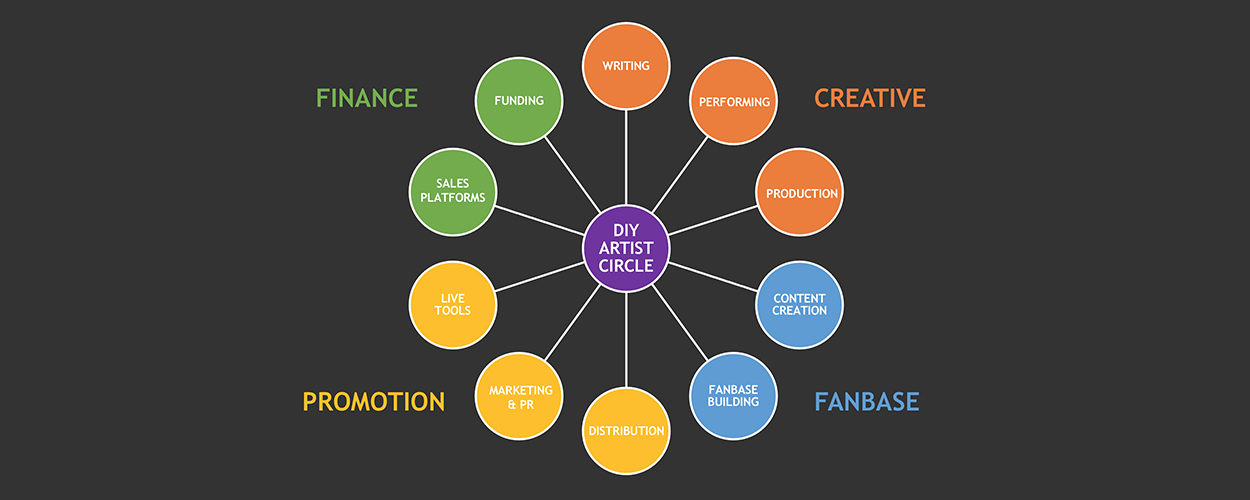This website uses cookies so that we can provide you with the best user experience possible. Cookie information is stored in your browser and performs functions such as recognising you when you return to our website and helping our team to understand which sections of the website you find most interesting and useful.
Business News Education & Events Pathways Into Music Update
Industry experts inform the Pathways Into Music artist circle at The Great Escape: Part One
By CMU Editorial | Published on Tuesday 17 May 2022

CMU’s Pathways Into Music Foundation last week used the MUSIC+EDUCATION sessions at The Great Escape to present more of its research work which aims to provide music educators and talent development organisations with resources that they can use to give DIY phase artists the knowledge and information they need to pursue a career around their music-making.
At TGE, Foundation director Phil Nelson presented the artist circle, a way of understanding the process artists go through when growing an audience and business around their music.
That begins with creative activities, and then moves onto fanbase building, which is in turn amplified through the promotion of releases and shows, and finally artists look for ways to raise funds and generate income around their music. So there are four quarters to the artist circle: creative, fanbase, promotion and finance.
With the artist circle introduced, music industry experts were then invited on stage at TGE to together compile the ten key pieces of knowledge and information that educators and talent development teams should be looking to communicate to DIY phases artists for each quarter of the circle.
Providing the tips for the creative quarter were Adam Joolia from AudioActive, Charlotte Caleb from cSquaredLDN, and Liam Craig from North West Regional College.
Here are the ten tips they compiled…
1. Collaboration is key early on in your music career. Find other music-makers to work with – both within but also beyond your current circle – and also look for people with other creative passions to collaborate with, such as designers, photographers and film-makers.
2. Seek out ‘musical playgrounds’ where you can experiment with your music-making. These playgrounds maybe within an educational institution – but if you’re not doing music at school, college or university, you should find other places where you can experiment, jam, cypher bounce off other creators and find collaborators – you might be surprised by how many of these ‘sparring grounds’ exist.
3. Lots of creative people have many passions and talents – so don’t pigeon-hole collaborators – find out about each person’s full range of interests and work. For example – you are probably talking to more songwriters than you think – many artists and producers are also songwriters.
4. Linked to that – try to expand your own range of music-making skills. For example, even if your primary interest is performing music, learning some basic production skills can be really valuable.
5. Be comfortable working with whatever you have in terms of technology – a lot can be achieved with simple apps and devices like Garageband and an iPhone.
6. And remember to be creative with what technology – and any other musical tools and instruments – you have access to. Restrictions and parameters can often actually boost creativity.
7. Learn to create on the go. Build a simple portable studio to take with you when you travel so you can take inspiration from your environment.
8. Make sure you finish and release your songs and tracks. It’s easy to become a perfectionist and never perform or release your music. But it’s important to get some of your songs and tracks out there, so you can see the response and interact with an audience.
9. Just keep making music! The more music you make the better a music-maker you will become. And music careers with longevity tend to come to prolific and consistent music-makers who build slowly and keep going.
10. Whenever you create new music – remember to think and talk about music rights. Every song you write and every recording you make is protected by copyright. When you collaborate you are going to share those rights with your collaborators – so be clear on what rights you have created and who is sharing in copyright ownership.
We’ll be publishing the ten tips for each of the other quarters of the artist circle in the days ahead in the CMU Daily. Or you can get them all in one place by downloading the latest Pathways Into Music Research Summary here.





